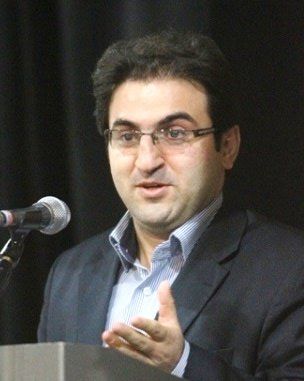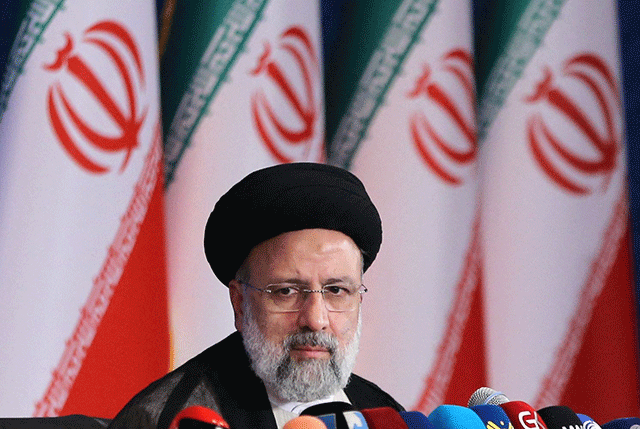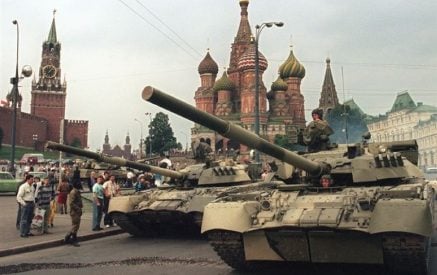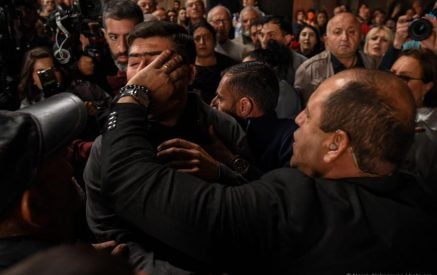Vali Kaleji, expert on Central Asia and Caucasian studies
12 February, 2023
– How exactly do the Armenian-Azerbaijani post-war processes and Russia’s war against Ukraine affect Iran’s foreign policy interests? Are there more threats or opportunities for Iran today? How are these threats and opportunities manifested?
Read also
Regarding the opportunities and threats for Iran after the war between Armenia and the Republic of Azerbaijan, I should mention that with the return of Zangilan, Jabrayil and Fuzuli to the sovereignty of the Republic of Azerbaijan, 138 km of the common border between Iran and Azerbaijan was completed after three decades and Iran got this opportunity to implement the process of construction and completion of Khoda Afrin Dam and its hydro power plant with the Republic of Azerbaijan after two decades. Also, the plan to revive the railways of the Soviet era, especially the reconnection of the Jolfa to Nakhchivan rail line, presented the opportunity to Iran after three decades to think about the reconnection of the railways with Armenia and the Republic of Azerbaijan. We shouldn’t forget that as a result of the first Karabakh war, Iran was the only country whose rail connection with the Caucasus region was cut off, which unfortunately still continues.
For the first time Iran also got the opportunity to be able to cooperate with Armenia, Azerbaijan, Russia and Turkey in a regional approach, in the 3+3 format and without the participation of extra-regional powers such as the European Union, NATO and the United States. Please, pay attention to the point that since the beginning of the collapse of the Soviet Union, Iran was opposite with the intervention of powers outside the Caucasus region in the developments and conflicts of this region, including the Karabakh conflict. Therefore, Iran welcomed the 3+3 format and after the first meeting of this format, which was held in Moscow on December 2021, Tehran was supposed to host the second round of negotiations, which has been prevented by the escalation of disagreements between Armenia and the Republic of Azerbaijan and the war between Russia and Ukraine. Although, as you know, Georgia has also refused to participate in this format due to its opposition to Russia.
But on the other hand, Iran feels that it has faced threats and challenges after the second Nagorno-Karabakh war. Changes in the balance of power in the Caucasus region, the possible change of international borders, the occurrence of another war between Armenia and Azerbaijan, the securitization of Iran’s border with these two countries, the possible wave of Armenian war refugees to Iran, the realization of the Zangezur Corridor in in a way that can threaten or block the 38 km border between Iran and Armenia and the strengthening of Israel’s military and intelligence presence in the region, especially in the vicinity of Iran’s northwest borders, are important challenges and threats for Iran. Iran’s extensive military maneuvers in the past two years clearly show Iran’s deep concerns.

Vali Kaleji, expert on Central Asia and Caucasian studies
But the war in Ukraine has also brought many opportunities and challenges for Iran. The most important opportunity for Iran is to expand economic, banking, commercial, transit and defense relations with Russia. In fact, the war in Ukraine has brought closer and closer cooperation between Iran and Russia as two countries under sanctions. In recent months, the banking systems of Iran and Russia have been connected, and with the removal of the dollar, most of the banking transactions between the two countries are done in rubles and rials. In addition, the Russians have made extensive investments in Iran’s oil and gas sector, and Iran hopes to activate the North-South corridor in both the land route in the Caucasus and the sea route in the Caspian Sea with the participation of the Russians. In this regard, Iran hopes, with the participation of Russia, to finish the 164 km Rasht-Astara rail route as the only remaining rail section in the North-South corridor within the next three years. For this reason, the volume of trade between Iran and Russia, which was 1 billion dollars two years ago, reached 5 billion dollars in 2022. We shouldn’t forget that the preferential trade agreement between Iran and the Eurasian Economic Union is being upgraded to the level of free trade after three years. Therefore, expanding relations between Iran and Russia is also very important in framework of multilateral and regional cooperation in the CIS.
But on the other hand, the war between Russia and Ukraine has brought challenges and threats to Iran. The most important challenge was the negative impact of this war on the process of nuclear negotiations and the revival of the JCPOA which has caused unilateral US sanctions against Iran which continues during Joe Biden’s governance. Also, the issue of selling Iran’s drones to Russia, the details and dimensions of which are not completely clear, created a negative atmosphere against Iran at the international environment that of course has also had a negative impact on the process of negotiations to revive the JCPOA. In the economic aspect, under Western sanctions, Russia has sold oil, gas and steel below world prices to Asian customers, especially India and China that has had a negative impact on the export of these products by Iran.
– What is Iran’s agenda regarding the post-war Armenian-Azerbaijani confrontation? Is there any prospect for establishing a cooperation regime in the South Caucasus region?
I think Iran’s specific agenda in the Caucasus region is the following: preventing a new war between Armenia and the Republic of Azerbaijan, strongly opposing with threating and blocking of the border between Iran and Armenia, preventing change of international border and regional balance of power, strengthening the 3+3 format, removing blockages from communication routes, restoring Soviet-era railroads in the Caucasus, reinforcement of the “International North–South Transport Corridor” (Russia-Azerbaijan-Iran- India) and the “Persian Gulf-Black Sea International Transport and Transit Corridor” (Iran- Armenia- Georgia, Bulgaria- Greece), and opposition with Israel’s intelligence and security penetration in the South Caucasus. The establishment of cooperation in the South Caucasus region is facing serious obstacles. : the challenges for Armenia and Azerbaijan related to the Zangezur Corridor, the recent developments in the Lachin Corridor and Nagorno-Karabakh, Georgia’s non-participation in the 3+3 format, the reduction of Russia’s concentration in the Caucasus after the Ukraine war and the escalation of tensions between Iran and the Republic of Azerbaijan, especially after the attack on the Azerbaijani embassy in Tehran. However, in spite of aforementioned challenges, I think Energy and transit can be the starting point of cooperation and convergence in the Caucasus and can play the same role for Armenia and the Republic of Azerbaijan as the Coal and Steel Community played for post-war France and Germany in the 1950s.
– Can we say that today new algorithms of relations are being shaped in the South Caucasus? How exactly are these algorithms manifested? Which countries (Russia, Western countries, Armenia, Azerbaijan, Georgia, Turkey, Iran) are the most active in promoting them?
Yes, the algorithm and political arrangement and security arrangements in the Caucasus region have changed significantly after the second Karabakh war. The strengthening of the axis of Turkey and the Republic of Azerbaijan with the support of Israel and Pakistan is the most important development that has happened in the Caucasus region. Strengthening the Middle Corridor and increasing the role of the Republic of Azerbaijan in European energy since the start of the Ukrainian war has also helped to strengthen this axis. On the other hand, Armenia has been weakened after the second Karabakh war, and there is no consensus in this country for the direction of foreign policy, especially in relation to the normalization of relations with the Republic of Azerbaijan and Turkey. Indeed, the role and influence of Russia has decreased due to the war in Ukraine and Iran due to the continuation of sanctions. Also, as a result of the second Karabakh war, the Minsk Group has become very weak and in particular, France and the United States do not play an important and effective role in managing conflicts and disputes. Although the European Union is trying to be active in the process of developments in the Caucasus region through tripartite negotiations with the leaders of Azerbaijan and Armenia. But in general, I think Azerbaijan and Turkey are currently the most dynamic in the process of developments in the Caucasus region.
– What formats of cooperation with external actors of the South Caucasus region are acceptable for Iran? In other words, the agendas of which countries are most aligned with that of Iran?
Since the beginning of the collapse of the Soviet Union and the independence of the Caucasus countries, Iran has been against the intervention and participation of external actors, especially NATO, the United States, and Israel, in this region. For this reason, Iran has supported the 3+3 format, which is a regional approach with the participation of three Caucasus countries and three neighboring countries of this region. In general, it seems that Iran’s approach in the Caucasus is in harmony with Russia’s approach more than other actors. However, this does not mean full coordination between Tehran and Moscow in the developments in the Caucasus. For example, Moscow does not feel and perceive the threat that Iran has from Israel in the Caucasus. Also, Iran is against the opening of the Zangezur Corridor by force or in any other way that will threaten or block the Iran-Armenia border, so Russia has not had the expected support of Iran in this field.
– How do you feel (and how do they feel in Iran at the official level) about the lengthy blockade of the Nagorno-Karabakh residents by Azerbaijan? To what extent can this and other forms of pressure from Azerbaijan affect the conclusion of a peace treaty between Armenia and Azerbaijan and the unblocking of communication routes?
From the beginning of the Karabakh crisis in early 1990s, the Iranian government has recognized the region of Karabakh and regions around it as part of the Republic of Azerbaijan. However, Iran’s approach to the Karabakh conflict is not a one-sided one. For Tehran, the rights and security of the Armenians of Karabakh are also important and should be respected. Furthermore, Iran is against any war and application of force to resolve the Karabakh crisis by the Armenian and Azeri parties. Since the conflict zones between Armenia and the Republic of Azerbaijan including the Karabakh are in the southern part of the Caucasus, Iran is in a very vulnerable situation compared to Georgia, Turkey and Russia, which are far from the conflict areas. For this reason, Iran strongly opposes the occurrence of another war between Armenia and the Republic of Azerbaijan, because it directly threatens Iran’s security and border conditions in the northwestern regions. On the other hand, the impact of the recent differences in the Lachin Corridor and Nagorno-Karabakh on the suspension of negotiations on the normalization of Armenia’s relations with Turkey and the Republic of Azerbaijan, as well as the opening of communication routes, is quite clear. It should be noted that the signing of a stable peace treaty in the Caucasus region requires the support of the public opinion of the countries of the region. Therefore, any approach or policy that provokes and reacts public opinion against peace and encourages tension and conflict, it delays the peace process. I personally hope that the Caucasus region will not witness any more wars and conflicts and with the opening of borders and transit routes, the process of economic and social development of the South Caucasus region will accelerate.

























































